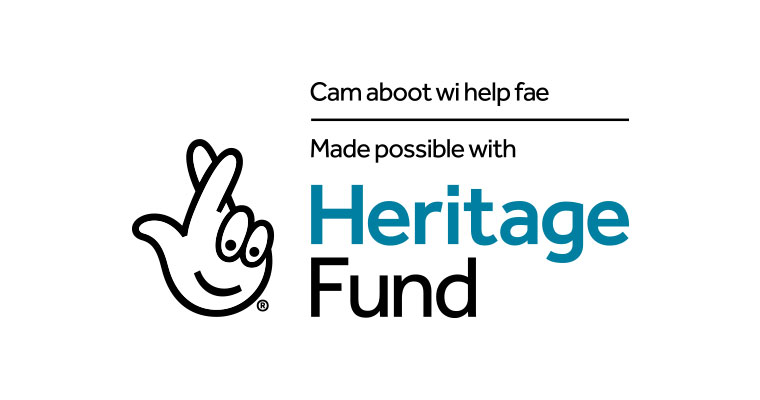Cairngorms 2030
A transformational vision for the Cairngorms
It is easy to feel powerless in the face of a global climate emergency and nature crisis. But we believe it doesn’t have to be this way. Inspired by the Gaelic word Dùthchas – meaning the deep-rooted connection between people and nature – Cairngorms 2030 is putting the power to tackle the climate and nature crises in the hands of people who live, visit and work in the UK’s largest national park.
“Dùthchas” – meaning the deep-rooted connection between people and nature
Across 20 long-term projects, Cairngorms 2030 will bring about transformational change in the Cairngorms, benefitting people’s health and wellbeing, delivering on climate change and enhancing nature across the National Park. The programme is on a larger scale than anything previously attempted in the UK and aims to inspire rural and urban communities throughout Scotland and beyond to take action and make a difference.
In particular, Cairngorms 2030 will focus on:
Projects for empowering communitiesPutting local people at the heart of decision-making and giving them more say in future funding decisions. |
|
Projects for transforming transportWorking with communities and partners to improve sustainable transport and better Active Travel connections across the National Park. |
|
Projects for changing landscapesWorking with land managers to explore new ways of managing land, as well as restoring and enhancing large areas of peatland and woodland. |
|
Projects for improving people's health and wellbeingDeveloping an economy that benefits people and nature and providing green solutions to public health issues including Covid recovery, social isolation and dementia. |
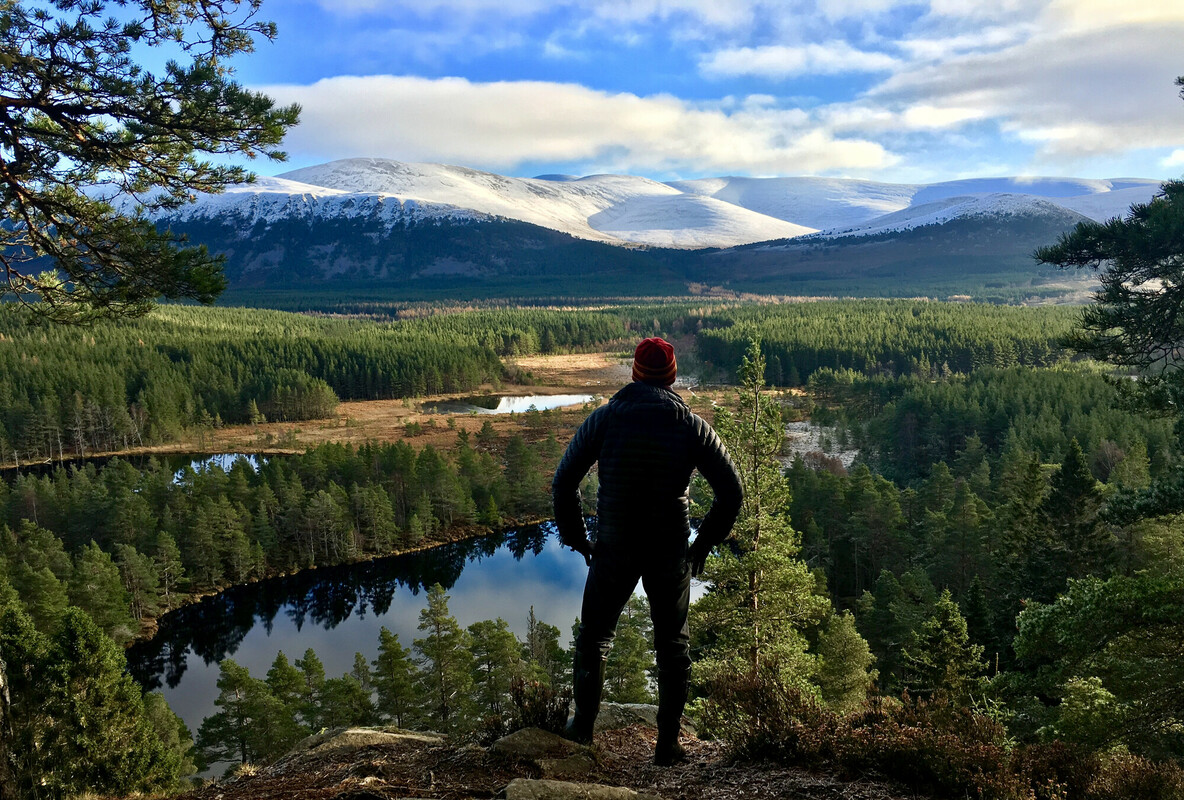
Introducing Cairngorms 2030
Join local resident Cailean Mckerron as he explains how Cairngorms 2030 will transform the Cairngorms National Park. The project is empowering the people who live, visit and work in the National Park to take action and tackle the climate and nature crises together.
Watch video on YouTube
Cairngorms 2030 is an unprecedented partnership of over 70 organisations and is supported by The National Lottery Heritage Fund, with thanks to players of the National Lottery.
Latest news and updates
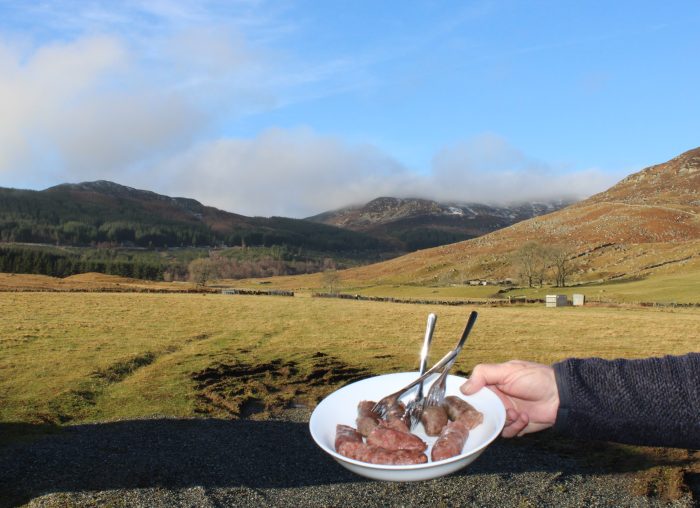
21/02/2025
Cairngorms 2030
“Lònach fèidhfheoil”: pròiseact gu bhith a’ lìbhrigeadh buannachdan 360-puing agus a’ dèiligeadh ri duilgheadasan àiteachais is dùbhlain shòisealta taobh a-staigh agus mu thimcheall Pàirc Nàiseanta a’ Mhonaidh Ruaidh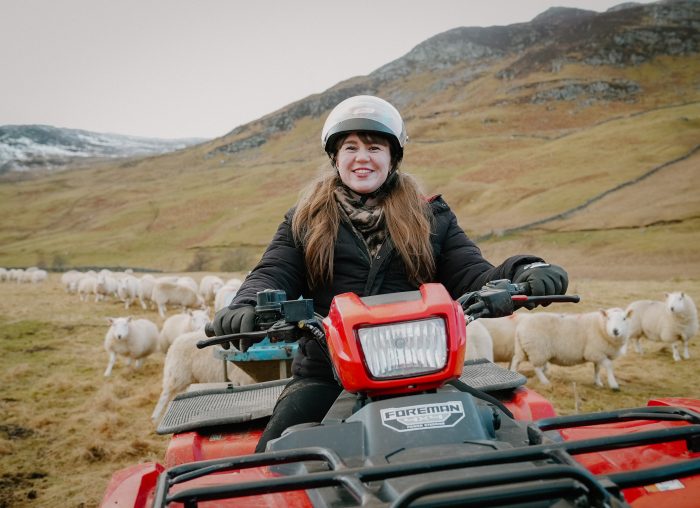
21/02/2025
Cairngorms 2030
Deer larder project to deliver 360-degree benefits addressing agricultural and social challenges in and around Cairngorms National Park.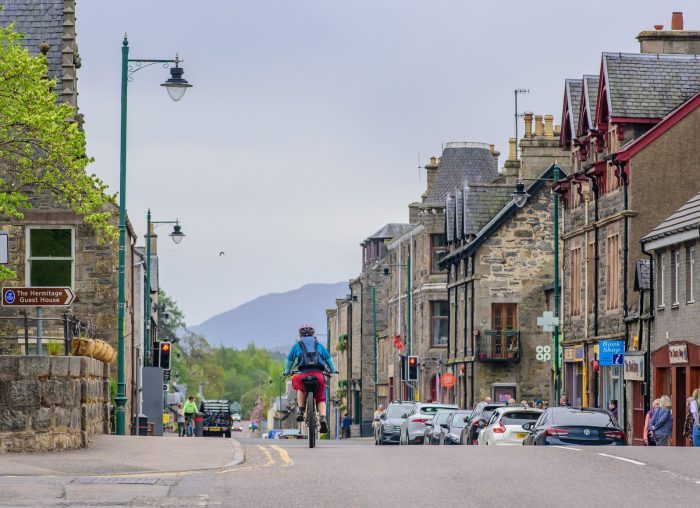
18/10/2024
Cairngorms 2030
Local community invited to Kingussie drop-in event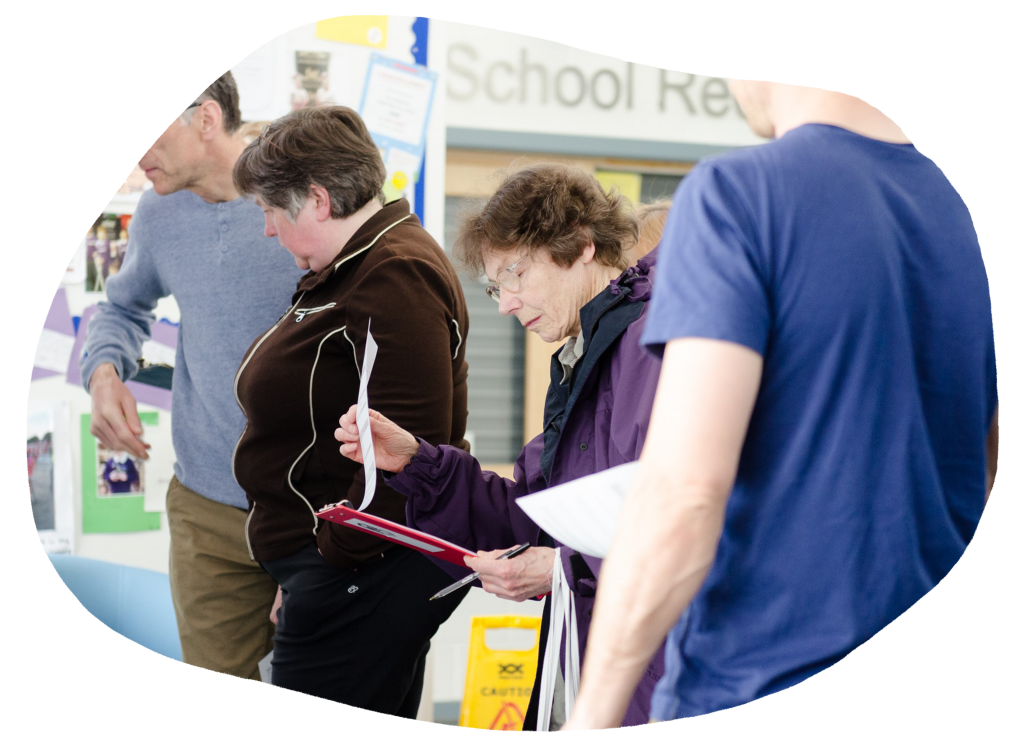 Empowering communities in the Park
Empowering communities in the Park
We’ll put local people at the heart of decision-making and give them more say in future funding decisions by:
- Creating forums to develop projects from the ground up
- Giving local communities power to decide which projects to fund
- Inspiring young people to take action via a dedicated learning programme
- Connecting people with traditional Highland culture via a new community arts programme
This project will increase awareness and deepen understanding of the climate emergency and its relevance to residents, communities, landowners and businesses in the National Park through a series of dedicated workshops. The workshops, led by Keep Scotland Beautiful, are aimed at anyone with a desire to increase their understanding and make more informed decisions to reduce their impact on the environment.
- Project lead: Tania Alliod, Learning and Engagement Officer
- Project partners: Keep Scotland Beautiful
- Project timeline: Delivery stage from January 2024 to December 2028
This project will put the voices of young people at the heart of decision making in the National Park and will empower and inspire our young people and educators to take forward pro-environmental behaviours and activity. We will adopt UNESCO’s Education for Sustainable Development mission and make it relevant to the Cairngorms National Park and its people.
- Project lead: Tania Alliod, Learning and Engagement Officer
- Project partners: Education Scotland, secondary schools, Skills Development Scotland, practitioners operating in the National Park, Cairngorms Youth Action Team
- Project timeline: Delivery stage from January 2024 to December 2028
This project brings together the National Park’s creative sector to identify and develop activities that create a greater connection to our landscapes and foster a sense of place. They will encourage people to get involved in community-based activity and take action to reduce climate change impacts in the National Park. This is an opportunity for the National Park’s creative community to articulate a vision for arts and culture in the Cairngorms, and to highlight the key role arts and culture will play in achieving transformational change. This work builds on the Creative Cairngorms project initiated by GrowBiz in 2021, which helped establish a collaborative network for the creative sector in the National Park.
- Project lead: Tania Alliod, Learning and Engagement Officer
- Project partners: GrowBiz, Bothy Project, XPO North, Creative Scotland
- Project timeline: Delivery stage from January 2024 to December 2028
Since the National Park’s inception in 2003, the most successful community projects have been those in which local people have been empowered to make decisions and given a degree of financial control over which projects are taken forward. The community-managed grant scheme will help us to achieve our net zero and wellbeing economy targets by giving communities the power to define, design, fund and deliver projects that matter most to them.
- Project lead: Bridget Trussell, Community Grants Manager
- Project timeline: Delivery stage from January 2024 to December 2028
This project will shape the way we engage with people in the National Park, ensuring individuals and communities feel empowered, want to contribute and have the resources to effect change at both a National Park-wide and community level. The project will identify the most effective engagement models and look at what works and what doesn’t when it comes to community engagement in the National Park. Working with stakeholders and communities, the project will also identify future topics for communities to consider to help us achieve our collective net zero and wellbeing economy targets.
- Project lead: Fiona McInally, Rural Development and Communities Manager
- Project partners: community councils, community development trusts, third sector organisations, residents, and businesses
- Project timeline: Delivery stage from January 2024 to December 2028
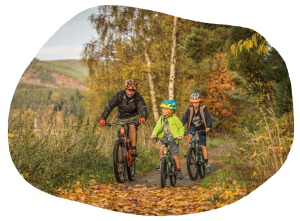 Changing the way people travel and get around
Changing the way people travel and get around
We’ll work with communities and partners to improve active and sustainable transport provision in the Park by:
- Developing high-quality walking, cycling and wheelchair-accessible connections both in and between communities as part of a new active travel plan for the Park
- Creating a dedicated e-bike network for residents and visitors to use
- Investigating and testing sustainable transport options including developing a sustainable transport vision for the route between Aviemore and Cairngorm Mountain
This project aims to make it easy and safe for residents and visitors to get around the National Park without a vehicle. By improving active travel infrastructure and public spaces, we want to make it more enjoyable for everyone to walk, cycle or get around using a wheelchair. Listening to local views and ideas will be central to developing the proposals.
- Project lead: Transport Manager
- Project partners: Local community stakeholders, Sustrans, HITRANS, The Highland Council, Transport Scotland
- Project timeline: Delivery stage from January 2024 to December 2028
- Find out more and get involved: [email protected]
By encouraging more people to walk, wheel, and cycle for everyday journeys, the project will improve health, create safer communities and reduce environmental impacts. Changing travel behaviours aims to reconnect individuals to their local heritage by making active travel and sustainable transport the natural choice for everyday journeys across the National Park.
- Project lead: Transport Manager
- Project partners: Local community stakeholders, Sustrans, The Highland Council, Moray Council, Aberdeenshire Council, Perth and Kinross Council, Angus Council, HITRANS, Nestrans, Tactran, Transport Scotland
- Project timeline: Delivery stage from January 2024 to December 2028
- Find out more and get involved: [email protected]
This project is about developing an accessible rural bike network for use by residents and visitors of the Park. The aim of the project is to reduce private car use and create a modal shift to active travel and reduce CO2 emissions in the National Park. It will engage, empower, and inspire residents and visitors to use a more sustainable, healthier transport option. The project will create a hire network of bikes for functional journey use (not for recreational cycling). Bikes will be available for visitors to use to travel to visitor attractions and for residents to trial using an bike in place of a second car.
- Project lead: Cycle Development Officer
- Project partners: Community organisations, cycle businesses, Cairngorms Trust, Regional Transport Partnerships
- Project timeline: Delivery stage from January 2024 to December 2028
- Find out more and get involved: email [email protected]
With transport accounting for over a third of Scotland’s carbon emissions, how we all travel needs to change to achieve Scotland’s net zero targets. High quality sustainable transport has the potential to make the Cairngorms National Park a fairer, healthier and more economically vibrant place to live, work and visit. Working with partners, Cairngorms National Park Authority is aiming to improve the sustainable transport options in the Park to make it easy to get around without a private vehicle. At first, we will focus on Deeside alongside the Glenmore Sustainable Transport Plan.
- Project lead: Transport Manager
- Project partners: Local community stakeholders, Aberdeenshire Council, Nestrans, Transport Scotland and Public Transport providers
- Project timeline: Delivery stage from January 2024 to December 2028
- Find out more and get involved: [email protected]
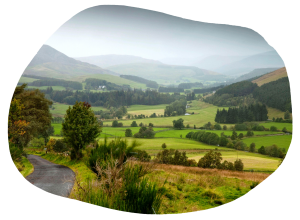 Restoring and enhancing landscapes
Restoring and enhancing landscapes
We’ll work with land managers to explore new ways of managing land and restore large areas of the Park by:
- Expanding woodland cover by 1,000 hectares
- Restoring 3,500 hectares of the Park’s peatland
- Exploring net zero farming with a group of six trial farms
- Reducing flooding risk in the most at-risk communities
- Securing additional green private finance for the benefit of nature and communities
Our river catchments run through the heart of communities within the Cairngorms National Park, providing fertile floodplain farmland, supporting industry and employment, tourism and recreational activity. They provide a source of water for the towns and villages along the river valleys, and support internationally important populations of Atlantic salmon and freshwater pearl mussel. However, contrary to the popular image of free-flowing waters tumbling from their source high in the Cairngorm mountains, the three largest catchments – the River Dee, River Spey and the Angus Glens – have had a long history of human engineering, their waters routinely abstracted for agriculture, industry and domestic supply. Couple all that to the impacts of climate change of increased flood events, increasing temperatures and drought and you have rivers under serious pressure. This project aims to increase climate change resilience to reduce flood risk and ensure that rivers continue to deliver for the people and wildlife that depend upon them.
- Project lead: Moya MacDonald Nature Based Solutions Officer
- Project partners: Dee Catchment Partnership, Spey Catchment Partnership, South Esk Catchment Partnership
- Project timeline: Delivery stage from January 2024 to December 2028
This project will help farmers in the Cairngorms National Park achieve lower carbon emissions and greater biodiversity on their farms without impacting their financial ‘bottom line’. The project builds on work being undertaken around Scotland on reducing carbon emissions in farming but applies them to the specific circumstances of the Cairngorms. This is important to ensure that farms here can achieve carbon neutrality, improve their profitability and climate change resilience, while protecting and restoring the natural environment.
- Project lead: Moya MacDonald Nature Based Solutions Officer
- Project partners: six farms, Game and Wildlife Conservation Trust, Quality Meat Scotland
- Project timeline: Delivery stage from January 2024 to December 2028
This project will work with specific communities of land managers and landowners, to co-develop strategies for land management that increases the biodiversity and ecological health of their land while also considering Highland cultural heritage, traditions, and employment.
- Project lead: Mike Cottam, Land Management Advisor
- Project partners: Deer Management Groups, estate staff, landowners and their agents, local communities (delivery)
- Project timeline: Delivery stage from January 2024 to December 2028
The Cairngorms National Park has significant potential for peatland restoration, woodland expansion, flood management, low carbon farming, biodiversity offsetting and many other potential nature-based solutions. Working with the Palladium Group, National Parks Partnership, public bodies and local land managers, this project will look to pilot an approach that blends sources of public and private finance to deliver our net zero and biodiversity targets, whilst also providing long-term benefits (and income) for land managers, investors and local communities.
- Project lead: Mike Cottam, Land Management Advisor
- Project partners: Palladium, National Parks Partnership, public bodies, and land managers
- Project timeline: Delivery stage from January 2024 to December 2028
We know the landscape of the Cairngorms will change over time, particularly due to the climate emergency and our collective effort to achieve net zero by 2045. There are, however, many different options for landscape change to achieve net zero, and we need to ensure that communities are engaged with the selection of those options which protect and enhance the special landscape qualities which they most value. This project will explore how communities perceive, experience and value the landscape of the National Park, identify special landscape qualities and their relative importance, and establish community preferences for different options for landscape change.
- Project lead: Caroline Stanton, Landscape Advisor
- Project partners: Scottish Land Commission, NatureScot, Historic Environment Scotland
- Project timeline: Delivery stage from January 2024 to December 2028
Our deep peatlands – the great carbon stores of the National Park – currently release thousands of tonnes of carbon into the atmosphere and our water courses each year as around 90% are in poor condition. This project will seek to repair around 3,500 ha of these damaged areas and deliver significant ecological benefits through restoration. That’s over 2½ football pitches of restored peatland per day over a five-year period.
- Project lead: Matt Watson, Peatland Action Programme Manager
- Project partners: NatureScot, land managers, independent contractors
- Project timeline: Delivery stage from January 2024 to December 2028
Woodland expansion is recognised as one of the best methods of sequestering carbon from the atmosphere. The woodland expansion programme will be a major carbon sink in the Cairngorms landscape, helping absorb and store large amounts of CO2 and contributing to our net zero targets. Through this project we will add 1,000 ha of new or expanded woodland, or around five football pitches of new woodland per week over a five-year period.
- Project lead: Fiona Holmes, Woodland Advisor
- Project partners: Land managers, Scottish Forestry, NatureScot and forestry consultees
- Project timeline: Delivery stage from January 2024 to December 2028
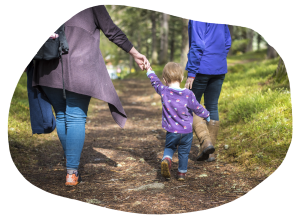
Fostering healthier, happier communities
We’ll develop an economy that benefits people and nature, and provide green solutions to public health issues by:
- Working with local businesses to create an economic model based on wellbeing not GDP
- Developing an NHS green health referral programme
- Creating a unique outdoor Dementia Activity Resource Centre
- Encouraging people to walk and cycle more in the Park
This project will develop the country’s first outdoor resource centre specifically designed to support people living with dementia, their families and carers, enabling enjoyment and exploration of the outdoor environment. Based at Badaguish Outdoor Centre, the project will offer a programme of outdoor-based therapeutic activities. A dedicated team will run the therapeutic programme, centred in and inspired by the natural environment.
- Project Lead: Gillian Councill, Associate Executive Lead for Localities, Alzheimer Scotland
- Project partners: Alzheimer Scotland
- Project timeline: Delivery stage from January 2024 to December 2028
The long-term health and wellbeing benefits of connecting with nature are well documented, and this project will support people to make lasting connections to nature and the outdoors. This covers a wide spectrum of activities, from viewing nature through your window and bringing the outdoors in, to stepping out into nature and taking part in facilitated activities. Our natural environment really does offer something for everyone, and everyone should have the support and opportunity to benefit in ways that serve them most. Fundamentally, the project aims to put people at the centre of tackling the climate, health and ecological crises and ensure that nature engagement is at the heart of improved wellbeing.
- Project leads: Dan Jenkins, Public Health Programme Manager and Louise Emslie, Green Health Ranger
- Project partners: Badenoch and Strathspey Community Hospital, Rangers (Park Authority and High Life Highland), NatureScot, RSPB Scotland, Forestry and Land Scotland, schools, youth services, community sports hub, care at home services and social work
- Project timeline: Delivery stage from January 2024 to December 2028
A wellbeing economy is designed with the purpose of serving the wellbeing of people and planet first and foremost, as opposed to more traditional measures like GDP. In doing so, wellbeing economies deliver social justice on a healthy planet. Working with WEAll Scotland, this project will explore and design the foundations of what a wellbeing economy might look for communities, businesses and visitors in the National Park. It will provoke discussion and generate ideas and solutions that address long-term health, wealth and sustainability challenges, to help people and nature thrive together.
- Project lead: Fiona McInally, Rural Development and Communities Manager
- Project partners: Wellbeing Economy Alliance Scotland (WEAll Scotland)
- Project timeline: Delivery stage from January 2024 to December 2028
Strategic Environmental Assessment
In accordance with section 8(1) of the Act, Cairngorms National Park Authority has made a screening determination in relation to the Cairngorms 2030 delivery phase programme and plans: elements of the plan do require environmental assessment. A copy of the determination, including statement of reasons, can be viewed by clicking the links below.
- Non technical survey: NTS Non Technical Summary
- Delivery phase: Cairngorms 2030 SEA Delivery Phase
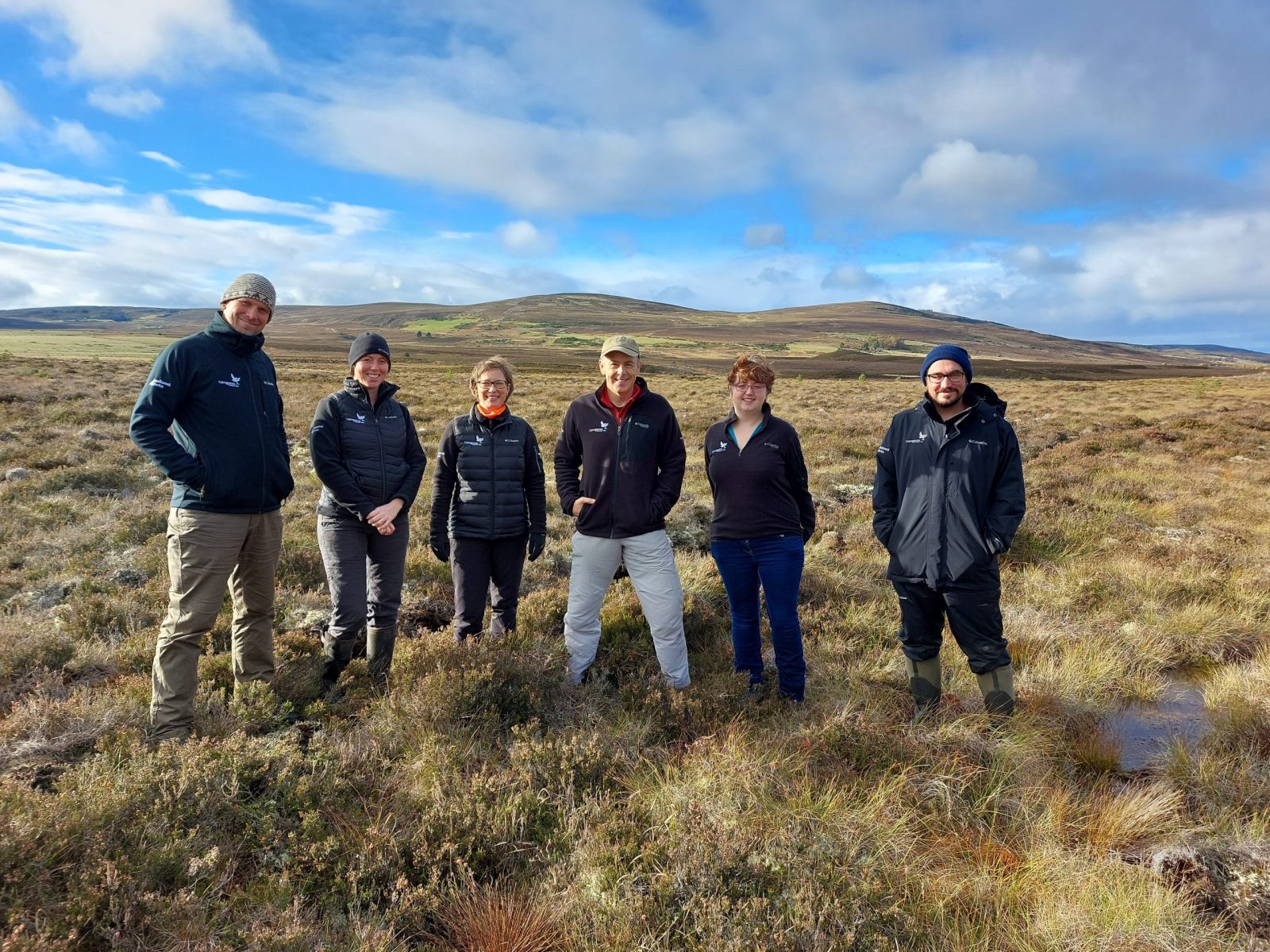
Get the latest updates
Sign up to our newsletter to get the latest news from all 20 of our Cairngorms 2030 projects, and to see how you can get involved.
SubscribeFind Out More
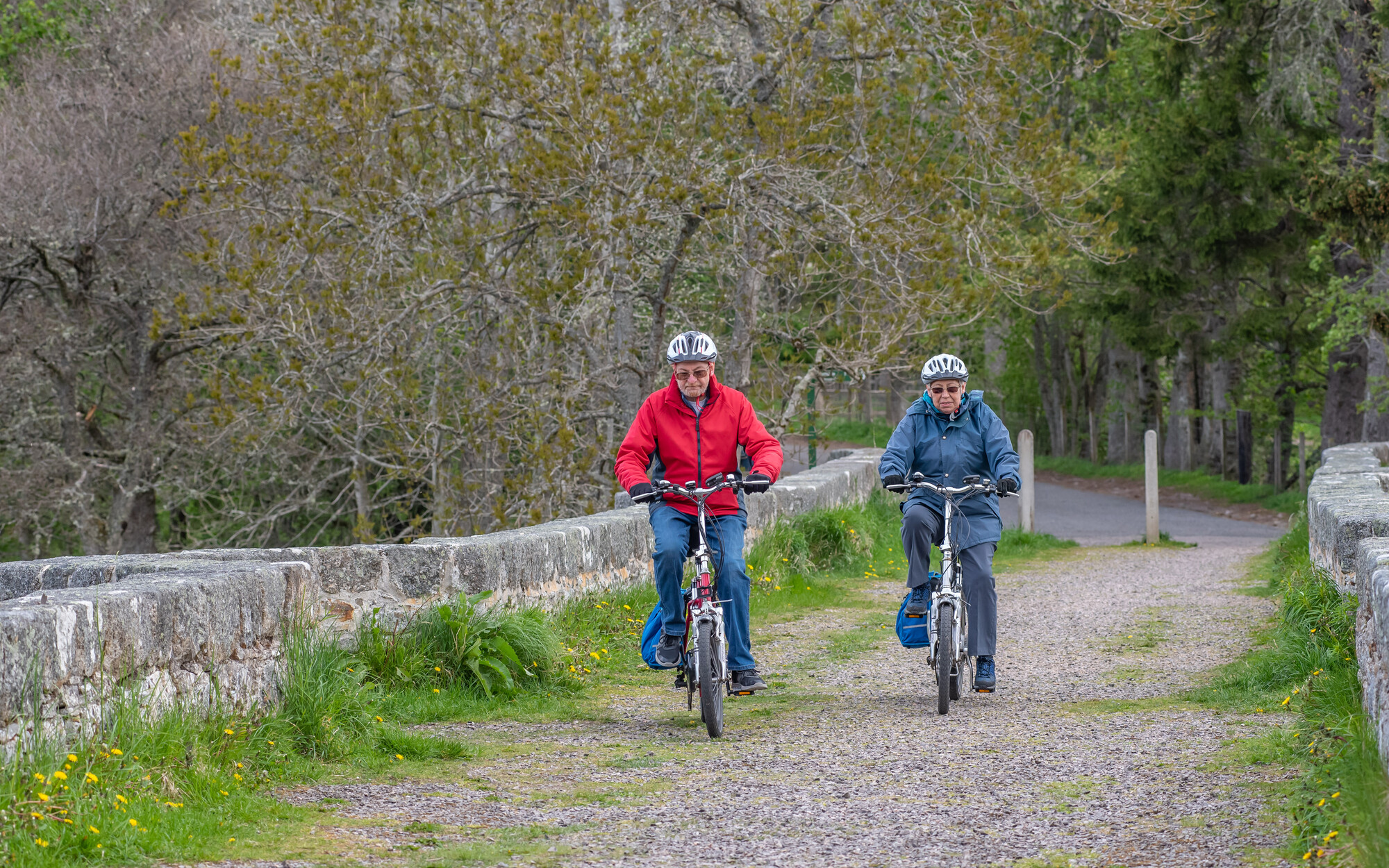
Share your views on where you live, work and play
As part of Cairngorms 2030, an ambitious programme is underway to put active and sustainable travel at the heart of a greener future for the National Park. We want to hear from you to help us shape these projects by clicking on have your say to take part in the consultation and to find out more.
Have your say